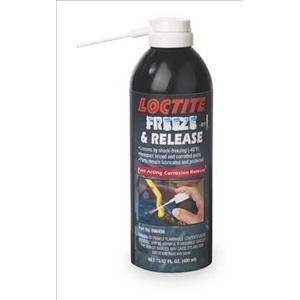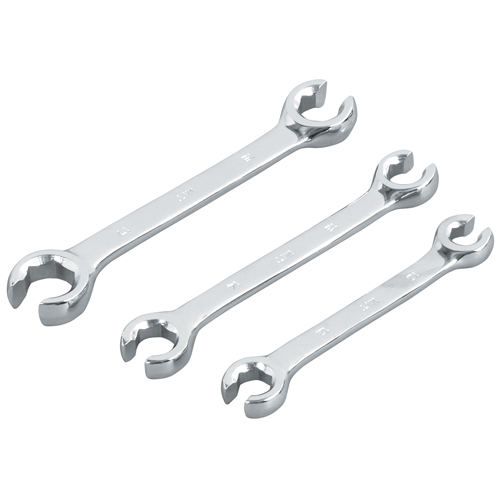read the thread and each of its sub links BEFORE doing anything else
http://www.crankshaftcoalition.com/wiki ... _fasteners
Now the method that you use will vary with the location and type/size of the bolt, and how far below the surface it broke off, in some cases a NUT can be welded on and the combo of the larger grip surface and the heat of the welding will loosen the threaded section fairly easily.
In many cases USE OF ANTI SEIZE on the threads during the assembly process, prevents these problems, in the future.
THE TRICK with successfully using easy outs correctly is that you need to center the drilled hole (it should be about 2/3-3/4 of the bolt diam.)and drill it ALL the way thru the remaining bolt both centered and CONCENTRIC with the bolt center line and TO SOAK the bolt threads LIBERALLY over 30 minutes with a GOOD PENETRATING OIL that can reach both ends of the bolt (I strongly advise)
and use a COBALT drill with lots of oil, drill slowly and keep the bit wet or it will overheat and dull quickly
well worth watching
http://www.freealloil.com/ )
http://loctitefreezeandrelease.com/
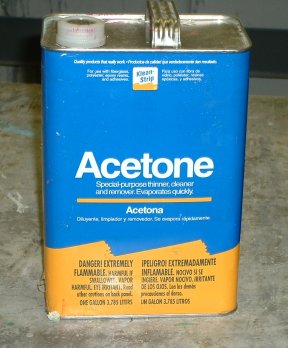

if you can,t get free oil locally mix a 50% / 50% mix of MARVEL MYSTERY OIL AND ACETONE AS A SOLVENT/PENETRATING OIL
read this
http://www.plumbingsupply.com/pipethreadsizing.html
http://www.brokentap.com/easy-outs.html
most failures are due to rushing the job,
(not soaking a MINIMUM of 30 minutes)
(not using a good corrosion removing penetrating oil)
(applying too much torque to the easy out, if it won,t back out easily in most cases you did not use enougth oil or waited long enought)
(or and this is most of the time, not drilling the hole both concentric and all the way thru the bolt)
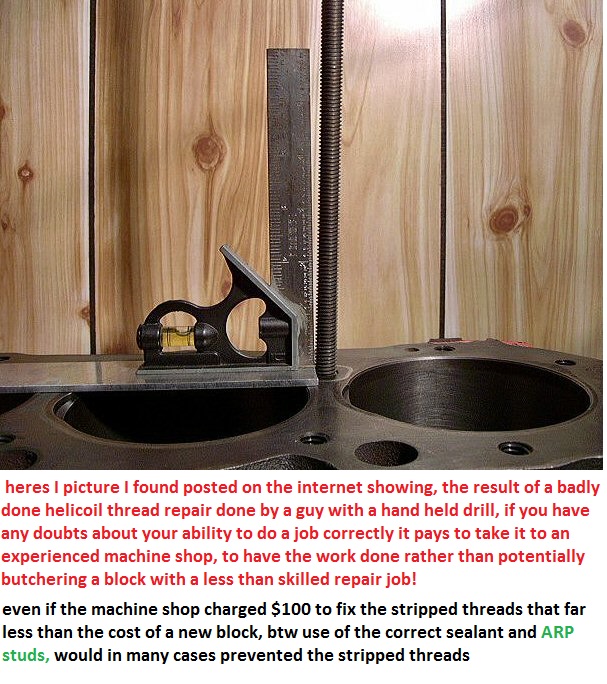
http://www.crustyquinns.com/tech/easyout.html
http://www.asashop.org/autoinc/may2003/techtotech.htm
"How would YOU go about trying to remove a cast iron exhaust manifold that has been in place for??? 20 years?"
well Id sure soak it down liberally and often over several days if I could wait that long,with a good penetrating oil, and Id use a small hammer to tap hard on each bolt head a good deal while I was appling that oil to allow the vibration to work the oil flow into more places,Id also get some rounded bolt head removal sockets
Okay how about tricks for keeping them from turning into the rusted ready to snap pieces of junk, in the first place?"
use grade 8 stainless and a coat of ANTISEIZE paste on the threads durringg assembly tends to prevent the problem
http://www.jegs.com/webapp/wcs/stor...atalogId=10002&storeId=10001&categoryId=22449
are you aware that there ARE REVERSE TWIST drill bits available, that you can order, in many cases just drilling the broken bolt out with one thats just slightly smaller in diam. than the broken bolt section will cause the bolt fragment to back itself out of the hole its in.
http://www.texaspowerwagon.com/mnfldblt.htm
http://www.hermanscentral.com/depar...s-high-speed-steel-fractional-sizes-11545.cfm
http://www.hermanscentral.com/product/1964-3950.cfm
viewtopic.php?f=50&t=2204
http://www.toolprice.com/product/1226D/ ... Forge.html
1. Use the punch to make a dent in the center of the shaft of the bolt you wish to extract... this will help keep your drill bit centered.
in an ideal world youll have a decent center punch

http://www.google.com/imgres?imgurl=htt ... 4&ct=image
so the drill won,t wander, off center in the first bit of drilling the hole for the bolt extractor
2. Use the drill supplied with the easy out kit or a similar hardened quality drill bit (it will be hardened) and drill as straight a hole as you can .. right down the center of the broken bolt for whatever distance the instructions recommend.then spray the bolt with the penetrating oil, hopefully it will soak into the treads from both ends
3.wait a few minutes then Re-Spray the bolt with liquid wrench, or free oil or the acetone trans fluid mix (sort of a lubricant for stuck bolts) and then start the reverse spiral easy out into the hole drilled in the bolt. Remember to turn the shaft counterclockwise. This will seat the easy out and tighten it up in the hole you drilled.
4. use a crescent wrench, or ideally a tap holder or something that fits the top of the reverse threaded shaft and start turning it slowly in a counter clockwise direction. This will tighten it in the hole and hopefully start unbolting the broken bolt. tapping on the easy out shank may help. heating with a torch then cooling with the penetrating oil, several times in succession usually helps
that's it... just don't break off the easy out, if it won,t budge don,t force it, just keep heating, cooling, soaking in penetrating oil and trying to turn it, it will eventually come loose.
a broken bolt/screw extractor of sufficient size, and some
http://loctitefreezeandrelease.com/
if sprayed directly on the plug it reduces the smaller parts temperature rapidly, this allows the part to shrink in diam. slightly , pulling away from the surrounding metal as the thread area won,t shrink along at the same rate due to the loss in conductivity along the thread area of heat transfer, this is exactly what happens with a steel part causing micro fractures in rust also
can be used to remove stuck pipe plugs once they are drilled
http://www.irwin.com/tools/screw-bolt-e ... 526-series
viewtopic.php?f=53&t=1480&p=6221&hilit=stripped+crank#p6221
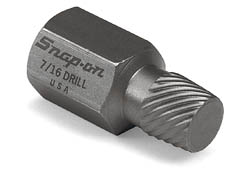
http://buy1.snapon.com/catalog/item.asp ... ir=catalog
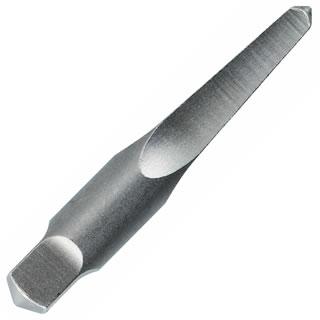
OK lets say you've screwed up and busted off a EASY-OUT hardened steel bit during the bolt removal process, now what?
obviously you'll quickly find out that standard drill bits won,t touch a l EASY-OUT hardened steel bit style bit as its far harder than most standard drill bits
you should know that hardened steel requires a slow drill speed (UNDER 300rpm in most cases) AND REQUIREs a constant flow of cooling oil, or a hardened drill bit will very quickly loose its edge, in seconds in some cases, YES IM WELL AWARE,that the tendency is to lean on the drill bit and spin it as fast as you can, which is exactly the wrong approach here, you need to apply steady pressure and low drill speeds and frequent lubrication, Ive used marvel mystery oil mixed with about 30% acetone as a lubricant for years with good results, but its very important to lube frequently,and drill slowly WD40 works as does CRC spray lube.
a hardened center punch helps center the bit and keep it from wandering off center.
http://www.ehow.com/video_4950955_drill ... steel.html
When to Use a Carbide Drill Bit
By: Gene Rodriguez, III
Drill bits undergo a lot of stress when drilling a hole. The high-speed rotation of drill bits generates friction that, in turn, generates heat. The friction between drill bit and material leaves drill bits slightly duller after each use. The heating and cooling of the drill bit material can weaken the internal structure of the bit over time.
The Common Drill Bit
Common home repair drill bits are made of steel or High Speed Steel (HSS). Although inexpensive, common steel drill bits tend to wear out or break very quickly. HSS drill bits last longer than steel, but are more expensive. These types of drill bits are most effective when used on wood, drywall or plastics.
A Bit Stronger
Coated drill bits use another, harder material to coat steel or HSS drill bits. Titanium carbide or titanium nitride coatings can increase the lifespan of a drill bit by two to three times. These types of drill bits are useful when drilling hardwoods or thin metals.
When The Going Gets Tough
Carbide drill bits are among the strongest drill bits available for home use. Carbide drill bits are more expensive than steel or titanium coated drill bits, but will last longer and stay sharper.
Carbide drill bits are absolutely necessary when drilling stainless steel or other high-density materials. No other drill bit can handle the job.
Regardless of the material that you usually drill, a carbide drill bit will last up to 25 times longer than a common steel bit. This can make carbide drill bits an economical choice for woodworking, furniture building or other large-scale projects.
When cutting dense material, use a cutting lubricant to avoid generating excessive heat. Overheating a carbide drill bit will shorten its lifespan. Always let the drill bit do the work. Applying too much pressure will quickly dull your drill bit.
http://www.ncprogramming.com/drill_size_chart.html
http://www.thetoolhut.com/tap-drill-sizes.html
http://www.drillbitwarehouse.com/home?p ... egory_id=9
HERES A DIFFERENT OPTION
http://www.theinductor.com/
titanium drill bits, better than high speed steel but may not be hard enough
Carbide drill bits,very good but fairly expensive
diamond drill bits--best, very expensive
http://www.crankshaftcoalition.com/wiki ... _fasteners
In many cases USE OF ANTI SEIZE on the threads during the assembly process, prevents these problems, in the future.
THE TRICK with successfully using easy outs correctly is that you need to center the drilled hole (it should be about 2/3-3/4 of the bolt diam.)and drill it ALL the way thru the remaining bolt both centered and CONCENTRIC with the bolt center line and TO SOAK the bolt threads LIBERALLY over 30 minutes with a GOOD PENETRATING OIL that can reach both ends of the bolt (I strongly advise)
and use a COBALT drill with lots of oil, drill slowly and keep the bit wet or it will overheat and dull quickly
well worth watching
http://www.freealloil.com/ )
http://loctitefreezeandrelease.com/


if you can,t get free oil locally mix a 50% / 50% mix of MARVEL MYSTERY OIL AND ACETONE AS A SOLVENT/PENETRATING OIL
read this
http://www.plumbingsupply.com/pipethreadsizing.html
http://www.brokentap.com/easy-outs.html
most failures are due to rushing the job,
(not soaking a MINIMUM of 30 minutes)
(not using a good corrosion removing penetrating oil)
(applying too much torque to the easy out, if it won,t back out easily in most cases you did not use enougth oil or waited long enought)
(or and this is most of the time, not drilling the hole both concentric and all the way thru the bolt)

http://www.crustyquinns.com/tech/easyout.html
http://www.asashop.org/autoinc/may2003/techtotech.htm
"How would YOU go about trying to remove a cast iron exhaust manifold that has been in place for??? 20 years?"
well Id sure soak it down liberally and often over several days if I could wait that long,with a good penetrating oil, and Id use a small hammer to tap hard on each bolt head a good deal while I was appling that oil to allow the vibration to work the oil flow into more places,Id also get some rounded bolt head removal sockets
Okay how about tricks for keeping them from turning into the rusted ready to snap pieces of junk, in the first place?"
use grade 8 stainless and a coat of ANTISEIZE paste on the threads durringg assembly tends to prevent the problem
http://www.jegs.com/webapp/wcs/stor...atalogId=10002&storeId=10001&categoryId=22449
are you aware that there ARE REVERSE TWIST drill bits available, that you can order, in many cases just drilling the broken bolt out with one thats just slightly smaller in diam. than the broken bolt section will cause the bolt fragment to back itself out of the hole its in.
http://www.texaspowerwagon.com/mnfldblt.htm
http://www.hermanscentral.com/depar...s-high-speed-steel-fractional-sizes-11545.cfm
http://www.hermanscentral.com/product/1964-3950.cfm
viewtopic.php?f=50&t=2204
http://www.toolprice.com/product/1226D/ ... Forge.html
1. Use the punch to make a dent in the center of the shaft of the bolt you wish to extract... this will help keep your drill bit centered.
in an ideal world youll have a decent center punch

http://www.google.com/imgres?imgurl=htt ... 4&ct=image
so the drill won,t wander, off center in the first bit of drilling the hole for the bolt extractor
2. Use the drill supplied with the easy out kit or a similar hardened quality drill bit (it will be hardened) and drill as straight a hole as you can .. right down the center of the broken bolt for whatever distance the instructions recommend.then spray the bolt with the penetrating oil, hopefully it will soak into the treads from both ends
3.wait a few minutes then Re-Spray the bolt with liquid wrench, or free oil or the acetone trans fluid mix (sort of a lubricant for stuck bolts) and then start the reverse spiral easy out into the hole drilled in the bolt. Remember to turn the shaft counterclockwise. This will seat the easy out and tighten it up in the hole you drilled.
4. use a crescent wrench, or ideally a tap holder or something that fits the top of the reverse threaded shaft and start turning it slowly in a counter clockwise direction. This will tighten it in the hole and hopefully start unbolting the broken bolt. tapping on the easy out shank may help. heating with a torch then cooling with the penetrating oil, several times in succession usually helps
that's it... just don't break off the easy out, if it won,t budge don,t force it, just keep heating, cooling, soaking in penetrating oil and trying to turn it, it will eventually come loose.
a broken bolt/screw extractor of sufficient size, and some
http://loctitefreezeandrelease.com/
if sprayed directly on the plug it reduces the smaller parts temperature rapidly, this allows the part to shrink in diam. slightly , pulling away from the surrounding metal as the thread area won,t shrink along at the same rate due to the loss in conductivity along the thread area of heat transfer, this is exactly what happens with a steel part causing micro fractures in rust also
can be used to remove stuck pipe plugs once they are drilled
http://www.irwin.com/tools/screw-bolt-e ... 526-series
viewtopic.php?f=53&t=1480&p=6221&hilit=stripped+crank#p6221
http://buy1.snapon.com/catalog/item.asp ... ir=catalog

OK lets say you've screwed up and busted off a EASY-OUT hardened steel bit during the bolt removal process, now what?
obviously you'll quickly find out that standard drill bits won,t touch a l EASY-OUT hardened steel bit style bit as its far harder than most standard drill bits
you should know that hardened steel requires a slow drill speed (UNDER 300rpm in most cases) AND REQUIREs a constant flow of cooling oil, or a hardened drill bit will very quickly loose its edge, in seconds in some cases, YES IM WELL AWARE,that the tendency is to lean on the drill bit and spin it as fast as you can, which is exactly the wrong approach here, you need to apply steady pressure and low drill speeds and frequent lubrication, Ive used marvel mystery oil mixed with about 30% acetone as a lubricant for years with good results, but its very important to lube frequently,and drill slowly WD40 works as does CRC spray lube.
a hardened center punch helps center the bit and keep it from wandering off center.
http://www.ehow.com/video_4950955_drill ... steel.html
When to Use a Carbide Drill Bit
By: Gene Rodriguez, III
Drill bits undergo a lot of stress when drilling a hole. The high-speed rotation of drill bits generates friction that, in turn, generates heat. The friction between drill bit and material leaves drill bits slightly duller after each use. The heating and cooling of the drill bit material can weaken the internal structure of the bit over time.
The Common Drill Bit
Common home repair drill bits are made of steel or High Speed Steel (HSS). Although inexpensive, common steel drill bits tend to wear out or break very quickly. HSS drill bits last longer than steel, but are more expensive. These types of drill bits are most effective when used on wood, drywall or plastics.
A Bit Stronger
Coated drill bits use another, harder material to coat steel or HSS drill bits. Titanium carbide or titanium nitride coatings can increase the lifespan of a drill bit by two to three times. These types of drill bits are useful when drilling hardwoods or thin metals.
When The Going Gets Tough
Carbide drill bits are among the strongest drill bits available for home use. Carbide drill bits are more expensive than steel or titanium coated drill bits, but will last longer and stay sharper.
Carbide drill bits are absolutely necessary when drilling stainless steel or other high-density materials. No other drill bit can handle the job.
Regardless of the material that you usually drill, a carbide drill bit will last up to 25 times longer than a common steel bit. This can make carbide drill bits an economical choice for woodworking, furniture building or other large-scale projects.
When cutting dense material, use a cutting lubricant to avoid generating excessive heat. Overheating a carbide drill bit will shorten its lifespan. Always let the drill bit do the work. Applying too much pressure will quickly dull your drill bit.
http://www.ncprogramming.com/drill_size_chart.html
http://www.thetoolhut.com/tap-drill-sizes.html
http://www.drillbitwarehouse.com/home?p ... egory_id=9
HERES A DIFFERENT OPTION
http://www.theinductor.com/
titanium drill bits, better than high speed steel but may not be hard enough
Carbide drill bits,very good but fairly expensive
diamond drill bits--best, very expensive
Last edited by a moderator:







